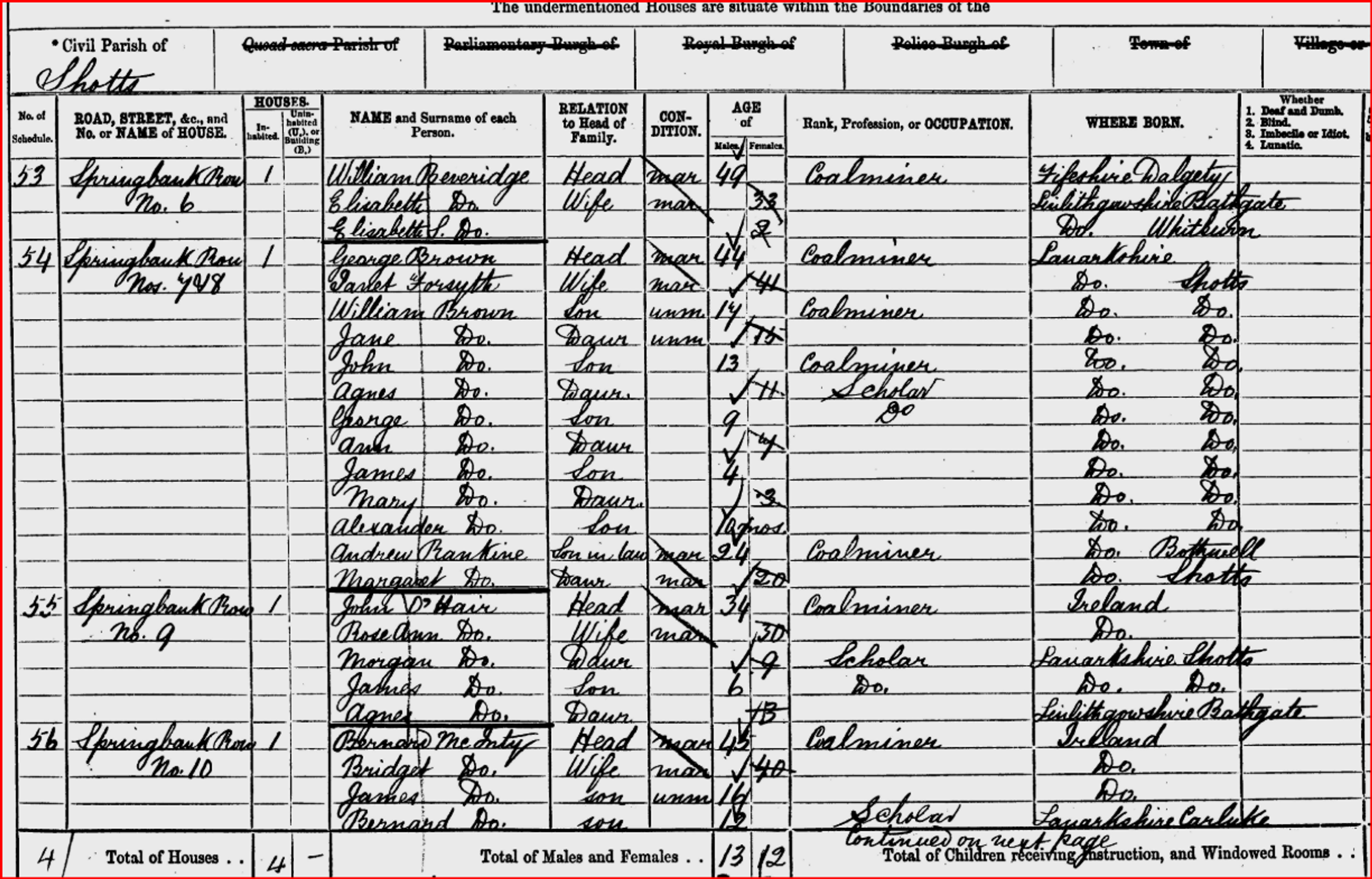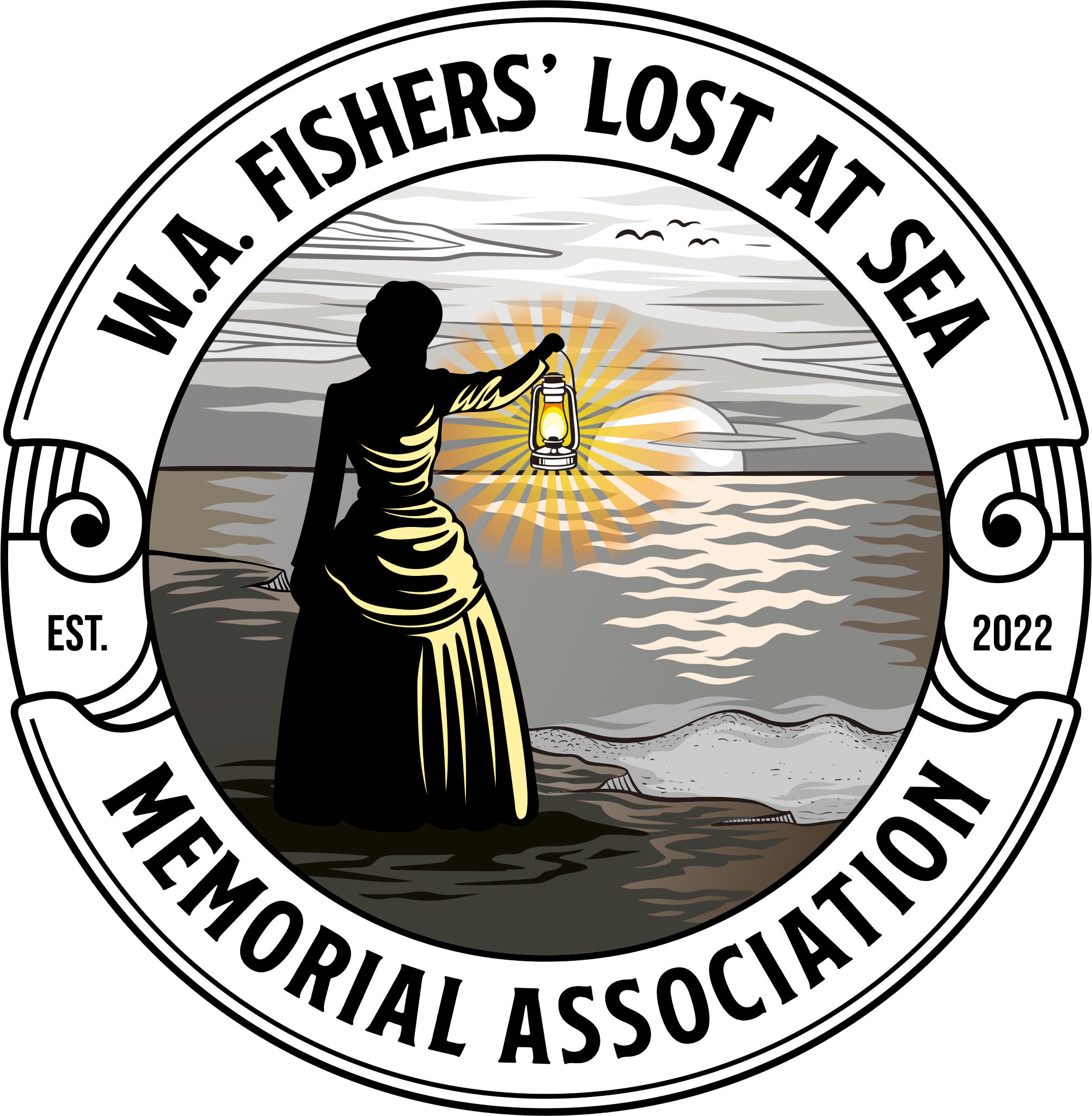Captain John Thomas Brown
Vessel Name: Empress
Captain John Thomas Brown
Accident on board; body not recovered.
3 January 1890

The family's dwelling record in Scotland
The two-masted schooner Empress was built in Fremantle by Robert Howson in 1889. She made her maiden voyage before she was registered as number 3 of 1890.Her official number was 95366.She was 37 x 11.3 x 4.9 feet [11.3 x 3.4 x 1.5 metres].
Empress’ owner was Arthur Webster Anderson, the manager of the North West Mercantile Co. There are also some reports of owners being Chi and Co.
The maiden voyage began on 17 December 1889 in Fremantle. Empress was bound for Cossack under command of Captain John Thomas Brown, a reputable reliable master. Her deckhands were William Ross and William Stuart.
The weather was rough, and the voyage was uncomfortable from the start. As a new vessel, Empress sailed in ballast held in place with planking. The planking was not secured well enough. As the schooner was tossed by the weather the ballast shifted, causing the planks to give way.
Empress was almost lost. The shifting weight of the ballast almost capsized her. It seemed like an eternity and a miracle to her crew when she slowly righted herself. That was the only luck Empress had. The rough and heavy weather made her slow headway north hard won.
Captain John Brown was born in Lanarkshire, Scotland in 1858 into a coalmining family. He was the third of eleven children of George Brown, a coalminer and Janet Forsyth.
John was a master mariner with experience of the WA coast. He was master of Annie in 1885 and Minnie in 1888, both schooners that traded along the west coast. John was married to Harriet Freeman. There is no record of children to their relationship. He was 31 years of age.
On 23 December John found William Ross below decks heavily intoxicated trying to cut his throat with a kitchen knife. Although a popular man in the northwest, William had mental health issues which seem to be exacerbated by life at sea. He was drunk when he boarded and continued to drink at sea.
John restrained William for his own safety. There was little he could do to help his crew man at sea. Eventually William seemed calmer. John returned to the tiller thinking William would rest. William escaped his restraints and jumped from the stern of the boat. He was not seen again despite immediately turning the Empress and searching the area.
John and William Stuart were shocked and dismayed. They decided to anchor at Carnarvon so that John could report William’s suicide. A distress signal was flown at half-mast when a crew member died. The Empress sailed to anchor with a flag at half-mast indicating William Ross' death.
John and William Stuart continued with the delivery of Empress to Cossack. It was still slow going, and if anything, the wind was stronger than before.
Then, on 3 January 1890 it the Empress’ luck worsened. A sudden wind took the boom unexpectedly, while John and William were tacking to sail inside Enderby Island. John was knocked overboard approximately 30 miles [48 kilometres] west of Cossack.
John simply disappeared below the surface. William turned the Empress to search for John. He saw two boats near Flying Foam Passage and hoisted the distress signal to attract help. The boats did not see him though, and as they moved out of sight, William kept searching alone. There was no trace of John, and he left the distress signal flying and headed towards Cossack.
The timing was fortunate. Just 15 minutes later there was a gale force wind that blew for hours. William had a lucky escape in the unluckiest voyage. It seemed the Empress was cursed. Two deaths in one voyage. (See the stories of William Ross and William Stuart).
